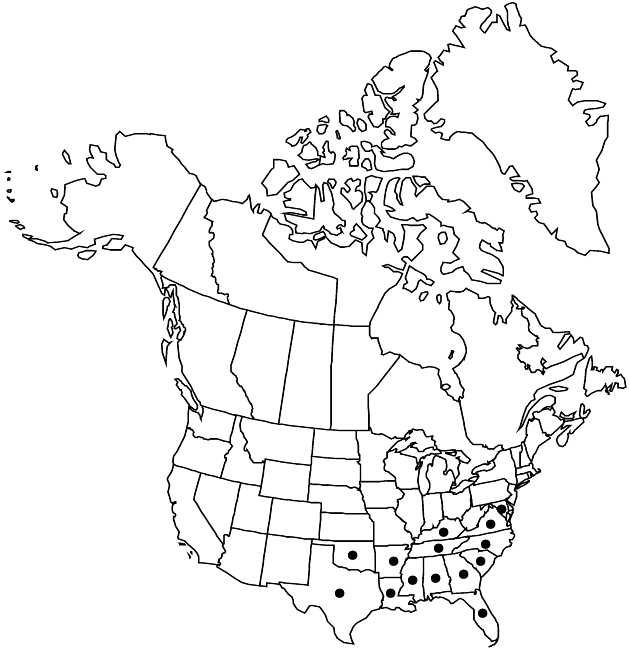Difference between revisions of "Elephantopus tomentosus"
Sp. Pl. 2: 814. 1753.
Treatment appears in FNA Volume 19. Treatment on page 203.
FNA>Volume Importer |
FNA>Volume Importer |
(No difference)
| |
Revision as of 19:36, 24 September 2019
Plants (1–)3–6+ dm. Leaves mostly basal at flowering; blades usually obovate to oblanceolate or spatulate (rarely ± orbiculate), 3–8(–10+) cm × 4–12(–25+) mm (including petioles), abaxial faces ± densely pilose, adaxial sparsely pilose to hirsute. Bracts rounded-cordate, 8–15(–20+) × 7–15(–18+) mm. Inner phyllaries 9–11+ mm, pilosulous, hairs 0.3–0.6(–0.9) mm. Cypselae (3–)4–5 mm; pappi 6–8 mm. 2n = 22.
Phenology: Flowering Aug–Sep.
Habitat: Open or shaded, dry to wet places in pine forests and mixed forests, often on sandy soils
Elevation: 10–600 m
Distribution

Ala., Ark., Fla., Ga., Ky., La., Md., Miss., N.C., Okla., S.C., Tenn., Tex., Va., Mexico (probably introduced).
Discussion
Selected References
None.
Lower Taxa
None.